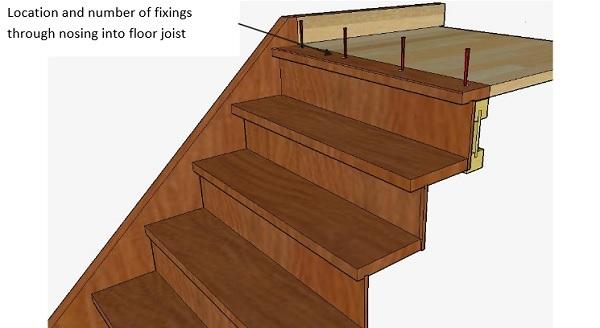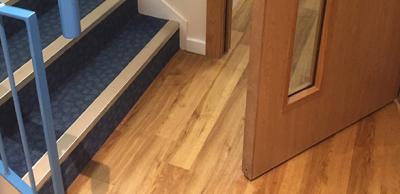How to install a timber staircase properly
(Updated 1 May 2020)
Timber staircases are an integral part of many homes across the UK. While the design and manufacture of a staircase is key to its integrity and effectiveness, it’s just as important to install it right.
Poor installation can cause the stability of the stair to be reduced and lead to failure. A new guide from the British Woodworking Federation Stair Scheme tells you how to make sure it doesn’t happen.
How to install a timber staircase properly
The freely available BWF Stair Scheme Installation Guide provides general information about installing timber staircases, focusing on these key things:
- Plan the delivery of the stair to be close to the time when it will be installed to ensure the minimum time of site storage. If necessary, store them in clean, well ventilated places protected from damp and direct sunlight. Keep long items flat on bearers.
- The finished size of the stair shouldn’t be the same as the sizes measured on site – this won't give any flexibility when you’re installing the stair and won’t allow parts of the flight to be manoeuvred into position.
- Ensure the staircase you’re installing will support the loads of both the flights and the balustrades.
- You must support the stair until all the fixings to the surrounding structure are in place.
- Quarter landings and half landings need to support the same loads as the floors of the property.
- Floor joists should be let into the walls (but not into cavities) for support or be supported by joist hangers.
- A handrail on its own can’t act as a safety barrier. The full guarding system needs to work together to prevent people from falling through or over it.
- Don’t use a stair until it’s securely fixed in place.
Further information
This installation guide covers all vital areas where mistakes often happen. Download your free copy of the BWF Stair Scheme Installation Guide.
There's also Top tips to avoid common staircase problems
Please Note: Every care was taken to ensure the information was correct at the time of publication. Any written guidance provided does not replace the user’s professional judgement. It is the responsibility of the dutyholder or person carrying out the work to ensure compliance with relevant building regulations or applicable technical standards.
Sign up to the building bulletin newsletter
Over 48,000 construction professionals have already signed up for the LABC Building Bulletin.
Join them and receive useful tips, practical technical information and industry news by email once every 6 weeks.
Subscribe to the Building Bulletin




Comments
(No subject)
Submitted 7 years 2 months ago
(No subject)
Submitted 7 years 2 months ago
(No subject)
Submitted 7 years 2 months ago
(No subject)
Submitted 7 years 2 months ago
(No subject)
Submitted 7 years 2 months ago
Thanks for the feedback. We're glad you're finding the updates useful.
Editor, LABC
Webmaster note
Submitted 7 years 2 months ago
civil engineering student
Submitted 4 years 3 months ago
(No subject)
Submitted 4 years 2 months ago
LABC team
Add new comment